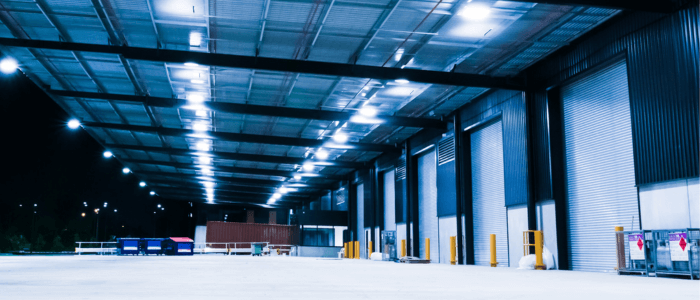Inspection of investment properties has been a core part of the process of preparing depreciation schedules in the past. For some properties, an inspection is still the best way to ensure all capital works and assets are properly captured for the benefit of maximising the tax deductions available to the owner.
Whilst it is common practice to complete depreciation schedules for brand new properties without a site inspection (provided floor plans, asset specifications and construction cost is provided), second-hand properties have typically been inspected in person to take photos, measurements, and assess additional works. But is that always necessary?
Today, in this modern information era, we have discovered that for many properties a virtual inspection is perfectly adequate for capturing all the necessary data, and ensuring maximum tax deductions are still claimed. Capital Claims Tax Depreciation has been completing virtual property inspections for properties that qualify for over three years now. We have carefully tracked the results of properties inspected in person versus those inspected virtually, and our results show that for many properties there is no additional benefit to having an inspector personally attend your property. In fact, there are some added benefits to virtual inspections as outlined below.
Read further as we explain how our team can still achieve excellent results for investors, without having to personally inspect your property.
What is done at a depreciation inspection?
A typical property inspection for depreciation purposes includes:
- Measurement of gross floor area of the building, including any additional works;
- Professional assessment of the age of the property and any additional capital works that have been completed (where construction dates are not known or available);
- Determining construction type of the property;
- Compiling a list of all depreciating assets;
- Taking photographs for future reference and evidence of findings.
Inspection of a residential property usually takes up to 30 minutes.
Is the inspection done by a qualified quantity surveyor?
Inspections by most quantity surveying firms are not completed by a qualified quantity surveyor. Usually, an inspector is trained by a quantity surveyor to identify and photograph all of the important information in the property that will be used to complete the tax depreciation schedule.
What does the quantity surveyor do?
The quantity surveyor uses the information that is captured at inspection, along with the relevant tax legislation, and their construction management qualifications to professionally estimate:
- Construction dates (age of property);
- Construction type;
- Valuation of assets;
- Effective life of depreciable assets.
The quantity surveyor then forecasts the deductions available each year for the owner to claim as a tax deduction.
What is the alternative to a physical property inspection?
It is the age of technology. For many properties today there is comprehensive information available electronically to conduct an excellent virtual inspection of a property. There is commonly an extensive amount of online sales and rental information and photographs, along with information accessible via council databases, property manager inspections, and specific paid property information databases, combined with photos and detailed information from the owner. In our experience (over 20 years producing quality tax depreciation schedules), much of the information collected at a physical inspection by an inspector today is a duplicate of the information obtained via skilled online research combined with detailed client information.
Will the deductions reported be the same?
As an investor, you should expect the same number of deductions for a property inspected virtually, as you would for a property inspected in person (provided your quantity surveyor has the systems, tools and a skilled and experienced team to conduct the appropriate research).
For over three years that we have been conducting virtual inspections for some properties, we have tested our processes by:
- Completing two reports for the same property completed via both methods to measure any discrepancies;
- Tracking average claims per property;
- Comparing the results of like properties where one has been physically inspected and one hasn’t;
- Tracking our error rate (return of reports rate) to monitor any increase (our current report return rate is less than 1% and these are typically minor administrative errors).
Our tests show that properties inspected virtually still achieve the maximum deductions available to investors.
What are the added benefits of having a virtual inspection?
The added benefits of a virtual inspection are many:
- No disruption to the property manager and the tenant;
- Faster report completion as we don’t have to wait to book an inspection (this can sometimes take weeks);
- Discounted fee – we pass on the time and cost savings of reduced travel to our clients;
- Reduced environmental impact through less car and plane emissions;
- Minimise hygiene and safety concerns – e.g. COVID 19, uncooperative tenants, unsafe properties.
Important – engage a team that is skilled and experienced at conducting virtual inspections
Not every business in our marketplace agrees that virtual inspections combined with comprehensive online research is adequate to replace an in-person inspection. As such, they may not have implemented the technical processes and team development to deliver an equally good result.
As a business we moved officially in the direction of conducting virtual inspections for some properties over three years ago. We did this for a number of reasons including:
- Availability of online and paid electronic information available;
- Environmental reasons – less travel and emissions;
- To maintain the safety of our team where inspections were not possible due to privacy concerns, or unsafe tenants or properties.
Conducting quality virtual inspections requires:
- access to quality paid property databases;
- a team skilled in how to navigate council and other property websites (for historic development applications/strata information etc);
- tools and forms to assist any self-inspecting if required;
- experienced quantity surveyors who can easily identify and obtain any missing information.
To find out if your property qualifies for a virtual inspection, please contact our friendly team on 1300 922 220 or request a quote with an estimate of deductions here.
FAQ’s
What is included in a depreciation schedule?
A depreciation schedule will include all your available tax depreciation deductions – this includes your Division 40 – Plant and Equipment Asset deductions, your Division 43 – Structural depreciation deductions as well as the CGT offset amounts for assets for where. Learn more about tax depreciation schedules.
Do I need a depreciation schedule every year?
No, you do not need a depreciation schedule every year. Your report will project forward for 40 years! The only time you need to update your existing depreciation schedule is if you have completed any minor or major renovations.
Do I need a depreciation report?
Yes! It can help reduce your taxable income and put more cash back into your pocket. You will need to organise a depreciation report from a qualified quantity surveyor.








